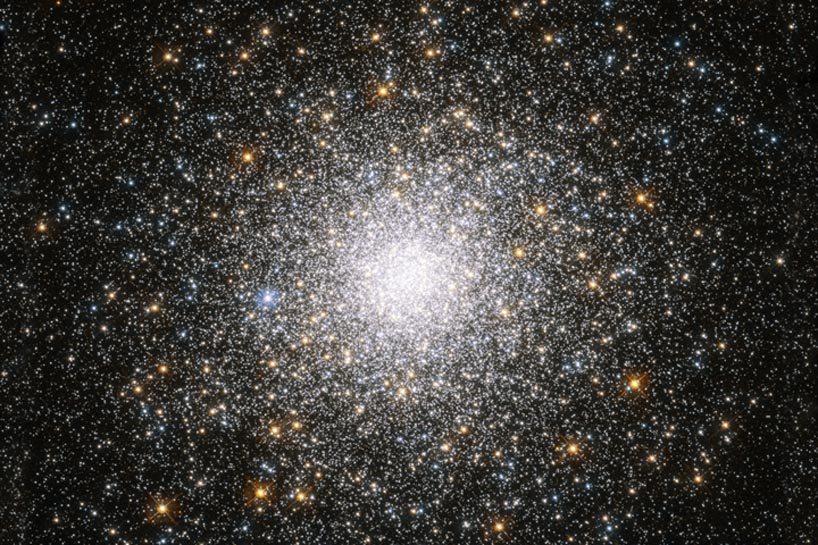
Globular Cluster
RA 20h 6m 4.86s Dec -21° 55' 17.85"
Sagittarius
67,000 light years
8.6
6.8 arcmin
1.84 x 1.33 arcminutes
North is 75.2° left of vertical
ESA/Hubble & NASA, F. Ferraro et al.
April 22, 2019
ABOUT THIS IMAGE:
This sparkling burst of stars is Messier 75. It is a globular cluster: a spherical collection of stars bound together by gravity. Clusters like this orbit around galaxies and typically reside in their outer and less-crowded areas, gathering to form dense communities in the galactic suburbs.
Messier 75 lies in the constellation of Sagittarius (The Archer), around 67 000 light-years away from Earth. The majority of the cluster's stars, about 400 000 intotal, are found in its core; it is one of the most densely populated clusters ever found, with a phenomenal luminosity of some 180 000 times that of the Sun. No wonder it photographs so well!
Discovered in 1780 by Pierre Méchain, Messier 75 was also observed by Charles Messier and added to his catalogue later that year. This image of Messier 75 was captured by the NASA/ESA Hubble Space Telescope's Advanced Camera for Surveys.
From Wikipedia:
Messier 75 or M75, also known as NGC 6864, is a globular cluster of stars in the southern constellation Sagittarius. It was discovered by Pierre Méchain in 1780 and included in Charles Messier's catalog of comet-like objects that same year.
M75 is at a distance of about 67,500 light years away from Earth and is 14,700 light years away from, and on the opposite side of, the Galactic Center. Its apparent size on the sky translates to a true radius of some 67 light years. M75 is classified as class I, meaning it is one of the more densely concentrated globular clusters known. It shows a slow rotation around an axis that is inclined along a position angle of -15°±30°. The absolute magnitude of M75 is about -8.5 or some 180,000 times more luminous than the Sun.
The cluster has a half-light radius of 9.1 ly (2.80 pc) with a core radius of about 1.6 ly (0.5 pc) and appears not to have undergone core collapse yet. The mass density at the core is 7.9×104 M?·pc-3. There are 38 RR Lyrae variable stars and the cluster appears to be Oosterhoff-intermediate in terms of metallicity. 62 candidate blue stragglers have been identified in the cluster field, with 60% being in the core region.
Messier
75 is part of the Gaia Sausage, the hypothesized remains of a dwarf galaxy
that merged with the Milky Way. It is a halo object with an orbital period
of 0.4 Gyr around the galaxy and a large eccentricity of 0.87. The apocenter
is 57 kly (17.5 kpc) - close to the current separation.